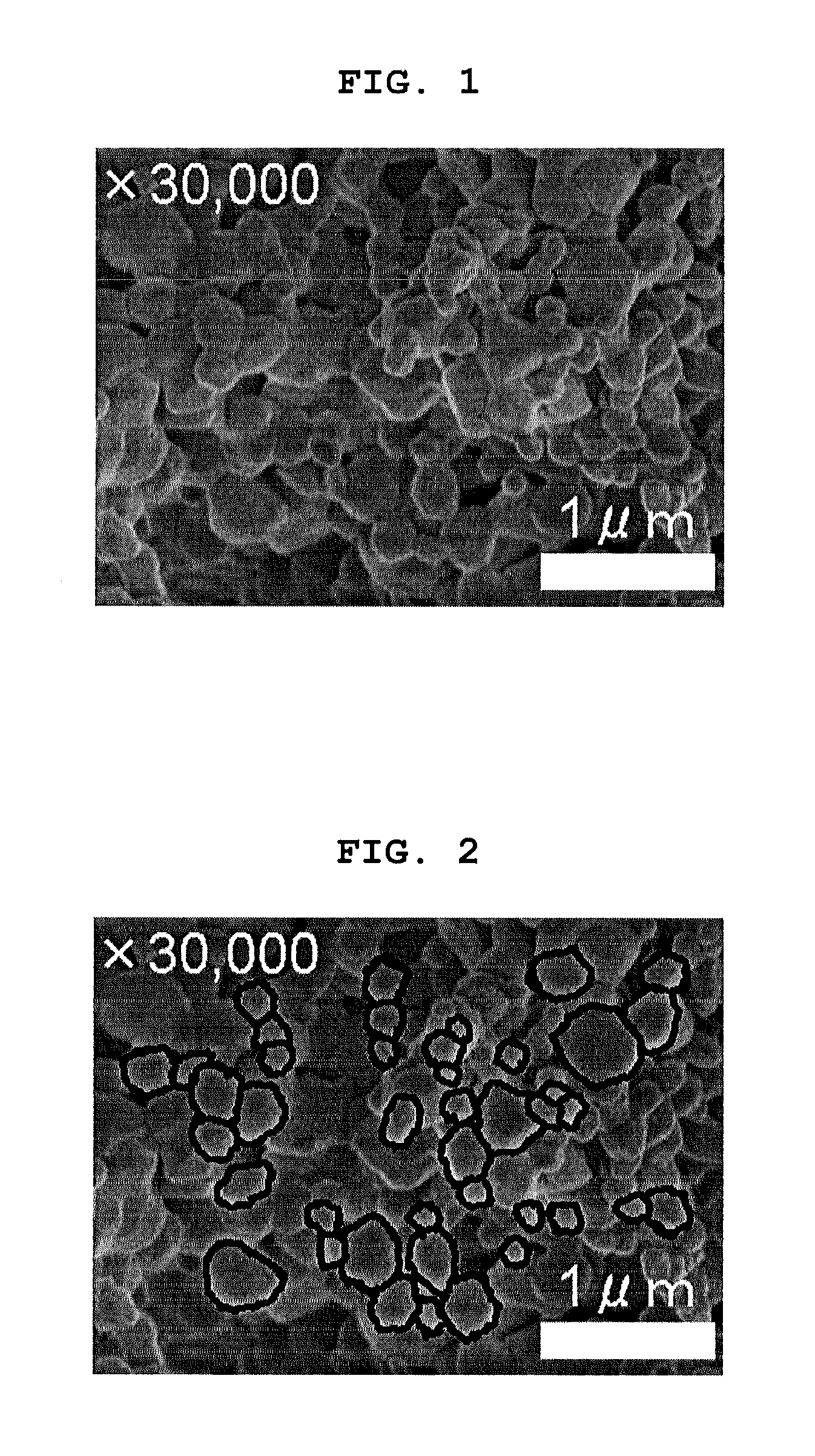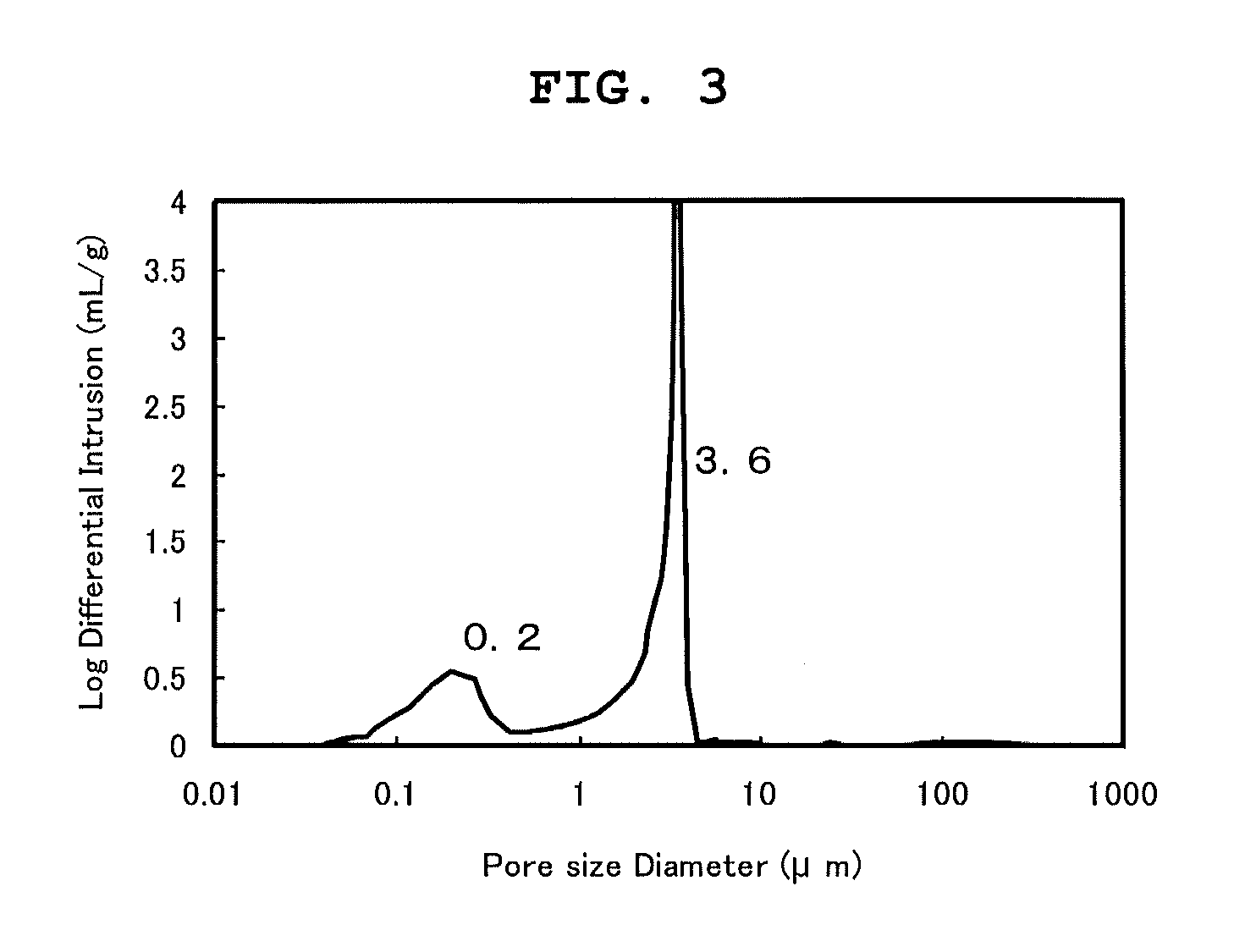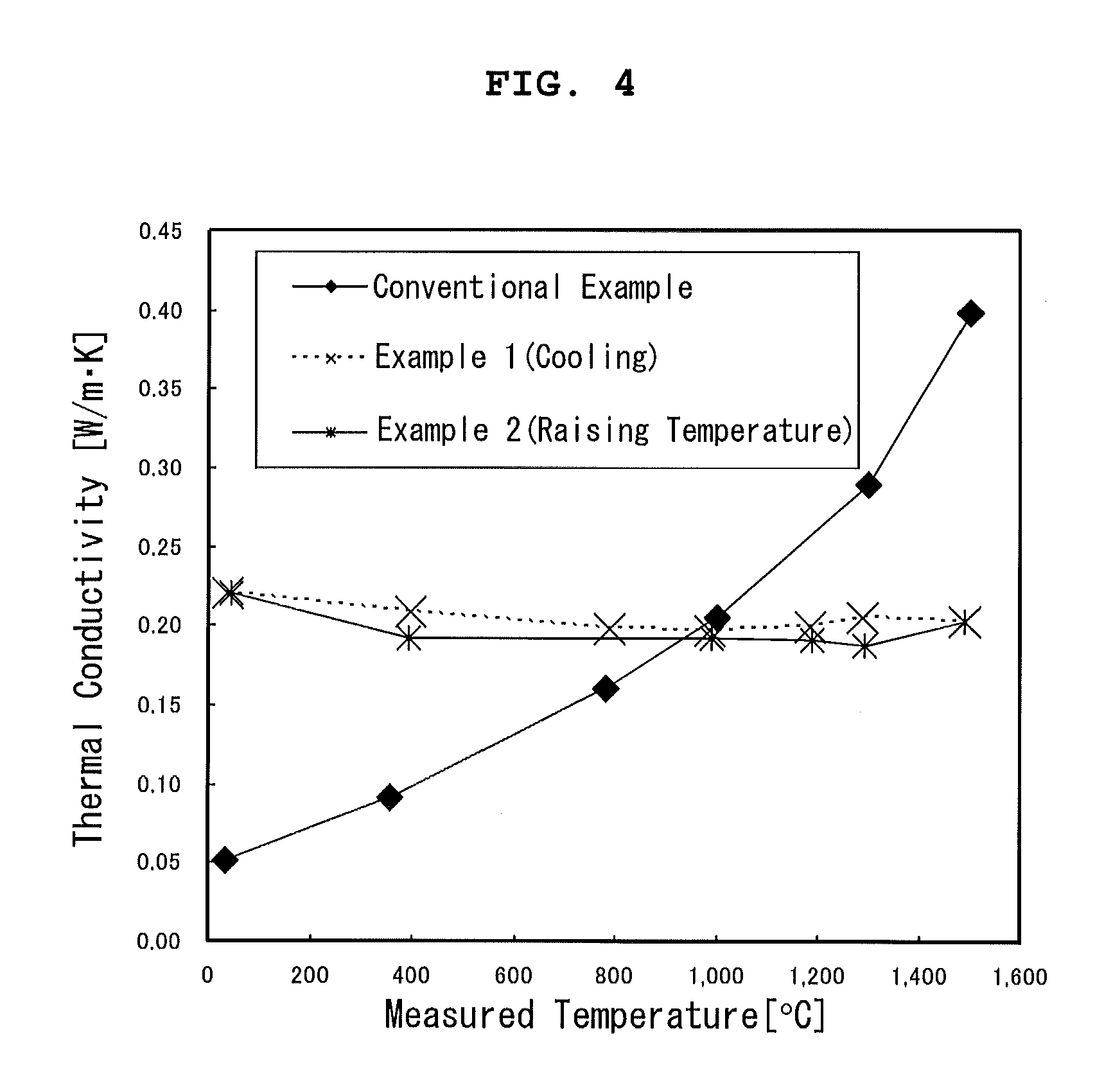Heat-insulating material
a technology of heat insulation and material, applied in the field of heat insulation material, can solve the problems of not clear how much heat insulation capability, not clear how many fine pores are present, etc., and achieve the effect of less energy supply, and reducing the quantity of hea
- Summary
- Abstract
- Description
- Claims
- Application Information
AI Technical Summary
Benefits of technology
Problems solved by technology
Method used
Image
Examples
example 1
[0083]Mixing was effected at a ratio of 9 mols of magnesium oxide powder (MGO11PB; manufactured by Kojundo Chemical Laboratory Co., Ltd.) to 11 mols of hydraulic alumina powder (BK-112; manufactured by Sumitomo Chemical Co., Limited). Pure water was added to the mixture to prepare a slurry. To the resultant slurry, acrylic resin particles having a diameter of 10 μm were added as a pore forming material at a rate of 50 vol. % of the slurry, and hydraulic molding was carried out to obtain a plate-like molded body having dimensions of 75 mm×105 mm×30 mm (thick) was obtained. This molded body was fired at 1500° C. in atmosphere for 3 hours to obtain a porous sintered body.
[0084]A crystal phase of the thus obtained porous sintered-body was identified by X-ray diffraction (X radiation source: CuKα, voltage: 40 kV, current: 0.3 A, scanning-speed: 0.06° / s), and a magnesia spinel phase was observed.
[0085]Further, the pore diameter distribution of this porous sintered body is shown in FIG. 3....
examples 2 to 11
, Comparative Examples 1 to 8
[0092]Porous sintered bodies were prepared having respective structures as shown in the following Table 2.
[0093]The structure of each porous sintered body was adjusted by changing an average particle diameter of the hydraulic alumina powder material, the mixing ratio of magnesium oxide powder, the loading of the pore forming material, firing temperature, and firing time.
[0094]The various evaluation results of the respective porous sintered bodies are collectively shown in Table 2.
[0095]
TABLE 2Pore-CalculateddiameterAverageThermalLargeFinePeakParticleConductivityPorosityPoresPoresPositionDiameter(W / m · K)Material(%)(vol %)(vol %)(μm)(μm)1300° C.1500° C.ConventionalMullite8432091(Fiber)0.290.40ExampleExample 1MgAl2O478170.200.210.200.203.8Example 2MgAl2O4771230.300.330.200.203.5Example 3MgAl2O465390.790.110.280.28Example 4MgAl2O470220.200.210.250.251.0Example 5MgAl2O489100.200.250.130.137.2Example 6MgAl2O49025230.300.600.220.256.2Example 7MgAl2O48350.290.3...
example 12
[0102]By the method as in Example 1, as shown in Example 12 in the following Table 3, the porous sintered body having the pore-diameter distribution peaks within a pore-diameter range of from 0.14 μm to 10 μm (inclusive) and also within a pore-diameter range of greater than 10 μm and 1000 μm or less was prepared by suitably adjusting a diameter and loading of the pore forming material.
[0103]The various evaluation results about this porous sintered body are shown in Table 3. The evaluation results of Examples 1 and 5 are also collectively shown for comparison.
[0104]It should be noted that, as for compressive strength in Table 3, cubes with dimensions of 20 mm (one side) were produced from the respective porous sintered bodies as test samples which were evaluated by a method as in JIS R 2615 “Testing method for crushing strength of insulating fire bricks”.
[0105]Further, the pore diameter distribution of this porous sintered body is shown in FIG. 6.
[0106]
TABLE 3VolumeVolumePore-Calcula...
PUM
| Property | Measurement | Unit |
|---|---|---|
| pore diameter | aaaaa | aaaaa |
| pore diameter | aaaaa | aaaaa |
| pore diameter | aaaaa | aaaaa |
Abstract
Description
Claims
Application Information
 Login to View More
Login to View More - R&D
- Intellectual Property
- Life Sciences
- Materials
- Tech Scout
- Unparalleled Data Quality
- Higher Quality Content
- 60% Fewer Hallucinations
Browse by: Latest US Patents, China's latest patents, Technical Efficacy Thesaurus, Application Domain, Technology Topic, Popular Technical Reports.
© 2025 PatSnap. All rights reserved.Legal|Privacy policy|Modern Slavery Act Transparency Statement|Sitemap|About US| Contact US: help@patsnap.com



